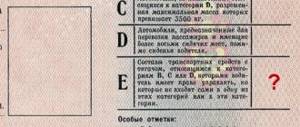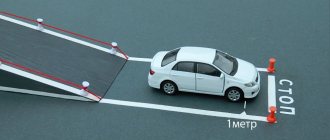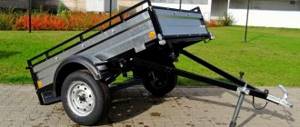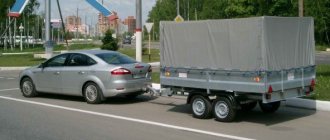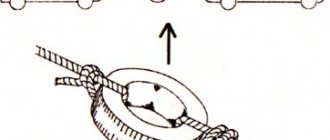Almost all car enthusiasts have an idea of what a towed trailer is. The situation when a car or truck simultaneously drags an additional trailer behind it can be encountered with enviable regularity. However, not all drivers go into detail regarding the subtleties involved, for the simple reason that these points are regulated by the rules of the road, and after passing the exams at the State Traffic Safety Inspectorate to obtain a driver’s license, almost everyone forgets about the traffic rules. In this case, you will have to consider what the permissible weight of a trailer towed by a passenger car may be in kilograms, what is required for this, as well as what nuances you will have to deal with.
Trailer - what is it?
Most modern motorists understand perfectly well what a trailer is. However, there are also drivers who are not familiar with this definition. In practice, a trailer is a vehicle that is not equipped with its own power unit and is intended to be driven in conjunction with a mechanical vehicle. This term, prescribed in the traffic rules, also applies to trailers and semi-trailers. In this case, motorists must take into account the fact that, from the point of view of traffic regulations, a trailer is a vehicle. If we talk about the name of a car with an attached vehicle without a motor, then here we are already talking about a road train. It is noteworthy that all these definitions apply not only to cars, but also to trucks. It is worth noting that when a trailer collides with another vehicle, from the point of view of traffic regulations, a traffic accident occurs.
What category is needed to transport a trailer?
Since it has already been stated that a trailer is a separate vehicle, it is completely logical that transporting it will require slightly different categories in the driver’s license. At the moment, there are several categories with which you can control road trains:
- BE – any available trailers for passenger cars;
- C – RMM weighing up to 750 kilograms;
- CE – any variants of truck trailers;
- D – RMM weighing up to 750 kg;
- DE – any variants of trailers intended for buses.
If a motorist only has category B, then he can transport trailers with a permissible maximum weight of up to 750 kilograms, or with a weight of more than 750 kg, but provided that the car is unloaded and the total weight of the road train does not exceed 3,500 kg.
Read us:
It is worth noting that the exact information regarding the required category for transporting a trailer is specified in the current Federal Law “On Road Traffic Safety”, namely in Article 25. Based on this, we can draw a small conclusion that the trailer can be attached to almost any vehicle that equipped with an appropriate mounting with a permissible maximum weight of 750 kg or less, which does not require an additional category. If we mention category B, then you can carry heavier trailers with it in your car, but subject to additional requirements.
For example, if a car has a permissible maximum weight of 2 tons, and without a load of 1,500 kg, then in this situation it will be possible to attach an additional vehicle without an engine with a permissible weight of 1,500 kg to the car without any problems or consequences. At the same time, the driver will not need an additional open category. In a situation where a car enthusiast plans to haul trailers that are heavier in weight, he needs to undergo training for category E. After which he takes an exam consisting of theory, a platform with four exercises, and a city. It is worth noting that the theoretical part of the exam for category E is taken using the same set of tickets as for the main category (for BE, the theory for B is taken, for CE the theoretical part is on CD).
Do you transport bulk cargo?
If your family realizes that you can transport black soil, sand, crushed stone, and so on in a trailer, then you will have to do this without fail. Now imagine: you have a 2.5-meter trailer with a carrying capacity of about 500 kg, and half a ton, for example, of sand is about 166–200 shovels (about 2.5–3 kg of sand fits into one shovel). Having loaded so many shovels, you are unlikely to want to unload it later, eventually transferring up to 400 shovels of 2.5 kg each, not counting the weight of the shovel itself. Therefore, it would be useful to purchase a dump trailer
. It costs more, but has a number of advantages besides quick reset.
Documents for transporting a trailer
It is necessary to take into account the fact that in the case of using a trailer, the motorist will not be able to get by with a standard set of documents for his car, since additional papers will be required, namely:
- driver's license;
- registration certificate for the main vehicle;
- a valid MTPL policy for the car;
- registration documents for a vehicle without a motor;
- diagnostic card in paper or electronic form.
Do not also forget that any trailer is also hung with registration plates, which are issued at the time the vehicle is registered with the traffic police department.
Do you need insurance for a trailer?
The current regulations of the Russian Federation clearly state that the obligation to insure motor vehicle liability does not apply to owners of trailers for passenger vehicles owned by citizens. This provision is clearly stated in the fourth article of the Federal Law “On Compulsory Motor Liability Insurance”. In other words, there is no need to insure a trailer attached to a passenger car, provided that the car owner has a compulsory motor liability insurance policy for the car in paper or electronic form.
However, it must be taken into account that this only applies to passenger vehicles. In all other situations, having a compulsory motor liability insurance policy is mandatory. It is worth noting that starting from 2021, a separate document for a mechanical vehicle without an engine is not required. However, the insurance company needs to enter data on the trailer into a valid form that is issued on the car. It is also necessary to take into account the fact that if you have a trailer, the final cost of compulsory motor liability insurance can increase by almost 40 percent from the initial value. It is noteworthy that this only applies to some types of trailers, while this does not apply to other mechanical vehicles without a power unit. If necessary, you can calculate the cost of compulsory motor liability insurance with a trailer using a calculator available on the insurance company’s website.
Dimensions of trailers for passenger cars
Every motorist at least once in his life has thought about purchasing a trailer for his car. It is very convenient to have the additional opportunity to move cargo that does not fit into the cabin. This also provides a certain saving of time and money, eliminating the need to order a cargo taxi when solving dacha issues, carrying out repairs, transporting furniture, goods for running a small business and traveling.
At the same time, a trailer cannot maneuver with the same ease as a car. And on the road it can create dangerous situations. Therefore, it is of particular importance to comply with the parameters of the trailer, the correspondence of its dimensions to the dimensions of the passenger car, which, if you have the appropriate driving skills, will guarantee the correct direction of movement of the trailer when turning the car.
In the practice of production, sale and operation of this product, there are the following basic standards for trailer sizes:
- the first
concerns the length, which cannot be 1.5 times greater than the car itself. The most popular lengths for well-known trailer models range from 2620 mm to 5105 mm. At the same time, the characteristics often indicate the size with a drawbar, so before purchasing you need to study the parameters very carefully; - As for the width, it cannot be 20 cm larger than the dimensions of the car. The most common are trailers with a width from 1695 mm to 2247 mm. Here you need to focus on the make of the car and compliance with traffic safety when maneuvering;
- The height of the trailer can be 3 m, but for each individual case it is necessary to calculate the maximum value of this indicator based on 1.8 track width. Technically, the most common height with sides is from 860 mm to 1220 mm, and with an awning - 1420 mm. ;
- special attention must be paid to the height of the center of gravity of the trailer when loaded, which must be related to its track width as a coefficient not exceeding 0.725. The danger of not taking precautions when taking into account this indicator is that an excessive amount of cargo in height can lead to loss of stability and overturning of the trailer. But this concerns the rules of operation rather than the characteristics of the product;
- An important detail is the ground clearance of the trailer; it must fully correspond to the same part of the passenger car.
- In some cases, the maximum parameters can be revised according to the car brand to the following dimensions - length 12 m, height 4 m, width 2.55 m.
When selling, indicate the dimensions of trailers as follows: Overall dimensions (including with a drawbar or with an awning), internal dimensions of the body, platform floor area, ground clearance, wheel track, loading height, total weight, height to the awning and other technical parameters.
The most complete information about the sizes of trailers is posted on its website by the Ural Automotive Trailers Trading House, so when purchasing this necessary product it is better to contact the specified manufacturer’s representative.
If you decide to purchase a trailer for your car, you can do this at the Ural Trailers Trading House:
- General purpose trailers
- Flatbed trailers for transporting snowmobiles and other equipment
- Boat trailers, frame trailers for transporting jet skis, boats, boats and other water equipment
- General purpose frame trailers
- Frame trailers for transporting motor vehicles
- Commercial transport trailers
- Trailers with plastic cover
Permissible speed limit for vehicles with a trailer
It is worth noting that the traffic rules set certain speed limits only for passenger vehicles with a trailer. The following criteria are provided here:
- no more than 90 km/h for driving on a motorway;
- no higher than 70 km/h when traveling outside the populated area;
- no more than 60 km/h when driving within populated areas;
- no higher than 20 km/h when traveling within the coverage area of the “Residential zone” sign.
Also, a passenger car with a trailer cannot drive more than 20 km/h in courtyard areas. Motorists should take into account that we are talking specifically about passenger vehicles, and not in relation to category B.
For example, if a small truck (for example, a Gazelle) is traveling with a trailer, then the previously mentioned restrictions do not apply here. This car, as part of a road train, can travel along the highway at a speed of 110 km/h. Also outside the city in this situation, the Gazelle driver can accelerate to 90 km/h. The same rule applies to relatively small pickup trucks, which in appearance may resemble passenger vehicles. Here it is necessary to take into account that the restriction also does not apply to trucks, buses and other vehicles that can move at the maximum permissible speed, both without a trailer and as part of a road train.
Types of passenger trailers and their main characteristics
Most trailers for passenger cars are universal. They are designed both for the transportation of ordinary cargo and for the transportation of various self-propelled equipment.
Most often, passenger trailers are divided into two types:
- Regular flatbed trailer. Such trailers are used for transporting all kinds of cargo: construction, agricultural, furniture, small-sized self-propelled equipment (ATVs, snowmobiles), etc.
- For water equipment (boat trailers). They can transport watercraft, ranging from a jet ski or small boat to a yacht.
Structurally, all car trailers for passenger cars consist of the following parts:
- Frame - can be assembled using either bolted or welded joints. Trailer frames assembled with bolted joints are more practical, since if any part is damaged, it can be easily replaced.
- Pendant . The most common types of suspensions on trailers for passenger cars are rubber-harness (torsion bar) and spring. Rubber-harness suspension is simpler and cheaper, while spring suspension is more reliable.
- Drawbar . On the drawbar there is a coupling head and an electrical socket. The drawbar can be straight or V-shaped.
- Body . All flatbed trailers have a body consisting of a bottom and sides. Boat trailers do not have a body.
- Lighting engineering . Trailers are equipped with white marker lights at the front, and a headlight unit (dimensions, brake light, turn indicators, fog lights) and license plate lighting at the rear.
Having a category “B” driver’s license, you can drive a passenger car with a trailer of any size: even five meters long, even two meters wide. The main thing is that this trailer has a total weight (the weight of the trailer together with the cargo being transported) of no more than 750 kg. Therefore, the body size must be selected based on existing needs.
Light trailers can be single-axle or two-axle . On one axle you can carry a maximum of 750 kg, and a two-axle one will “take” up to one and a half tons. According to the documents, both single-axle and two-axle trailers have a total weight of 750 kg, so they can be operated with any passenger car and category “B” license. But if the traffic police inspector catches you with an overload, then you will have to answer to the fullest extent of the law.
Each passenger trailer can be equipped with additional options, depending on the wishes and capabilities of the customer. Most often, trailer manufacturers offer the following additional options:
- Bracket for spare wheel;
- Idler wheel;
- Additional extension sides;
- Drawbar extension;
- Awning with arches;
- Winch.
To unload bulk cargo, the trailer must have a body tipping function (dump truck). It is also very convenient to use when rolling ATVs and other self-propelled equipment onto a trailer.
Most buyers immediately order a dolly wheel along with the trailer - this really makes the process of coupling and uncoupling the trailer with the car much easier. Boat trailers are usually equipped with winches for more convenient loading of boats and jet skis.
Road sign “No driving with a trailer”
The current traffic regulations contain a sign that prohibits the movement of vehicles with a trailer. However, it only applies to trucks with trailers and tractors. This also includes towing faulty mechanical vehicles. Here you should also take into account the fact that we are talking specifically about the type of transport, and not about the category to which the car belongs. In other words, this sign applies to light trucks belonging to categories B and C, any tractors, as well as towing mechanical vehicles. However, this sign does not restrict the movement of passenger cars and buses as part of a road train.
Transporting people in a trailer
Many motorists have no idea whether it is possible to transport people in a trailer. If you pay attention to the traffic rules, then here, according to paragraph 22.8 of the traffic rules, it is clearly stated that transporting people outside the cabin or side of a truck is prohibited. In other words, people are not allowed to be transported in a trailer on a truck. It is worth noting that violation of this regulation also provides for administrative punishment in the form of a fine.
What to look for when choosing
Regardless of whether your car is domestic or foreign, when choosing a trailer you need to pay attention to several special criteria, since not all trailers are compatible with all cars. Before buying a single-axle trailer for a passenger car, check the specifications.
- Indicator of the maximum permissible trailer weight (unloaded and loaded). Each car has a standard indicator that accurately indicates the permissible amount of weight.
- The number of hubs must be appropriate for both the vehicle and the trailer. It is worth paying attention here to the typical sizes for wheels and trailed tires.
- Possibility to install a jack, i.e. presence of a socket on the trailer for its installation.
- The specific type of suspension for this model (it can be spring, lever, torsion bar, etc.).
- Availability of a separate braking system.
- The presence of a recess-stand for the drawbar area and side clamps.
- Possibility to carry out repairs in a nearby workshop (for your convenience).
- Availability of spare parts and parts (for your convenience).
As for recommendations for choosing, it all depends mainly on the purpose of using the trailer. Most practical users recommend:
- use spring or torsion bar suspension types for a smoother ride of the trailer, since these designs use high-quality shock absorbers;
- durable locking mechanisms that will ensure a tight and reliable grip of the tractor with the trailer itself and will allow you not to waste time and energy on constant checks;
- Pay attention to the necessary documentation. To use simple light trailers (less than 750 kg), only a category B license is required. But if the total weight of the structure together with the vehicle exceeds the permissible standards, a category E license is required.
Another type of work where a single-axle car trailer is used is trade. The so-called type of sales “from wheels”, when the trailer is used to transport cargo, and subsequently as a counter.
Trailer lights
According to the traffic rules, any trailer that is part of a road train moving on public roads must be equipped with appropriate lighting devices. This information is present in provision 19.1 of the current edition of the traffic rules. At the same time, the side lights on trailers must be turned on at night, in conditions of poor visibility, and also when traveling in tunnels. If a motorist ignores this requirement, he will face punishment in the form of an administrative fine. Trailers must also be equipped with other lighting devices, including turn signals and a reversing light.
Is it possible to attach two trailers to a car at once?
It should be understood that the traffic rules do not provide any restrictions on the number of motor vehicles without an engine attached to the car. Moreover, in the current edition of the traffic rules, namely in paragraph 1.2, it is clearly stated that towing several trailers with one car is quite possible. However, regarding the process of towing several motor vehicles with engines, there is a ban here. You just need to take into account that a road train, consisting of a lead vehicle and several trailers, must necessarily comply with the RMM parameter (permitted maximum weight).
Conclusion
The permissible weight of a towed trailer is extremely useful information for any motorist, including even those drivers who do not plan to use an additional vehicle without an engine. However, there are a number of nuances and features that are recommended to be familiarized with in advance, so as not to subsequently encounter difficulties due to violation of traffic rules, for which, according to the current legislation, appropriate punishment options are provided, and, as usual, traffic police inspectors have a special interest always cause outstanding cars. And in this case, a car with a trailer will certainly catch the eye of a law enforcement officer, since a road train is the most prominent object against the background of the general traffic flow. Author: Oleg Mokrov
Maximum permissible weight of a passenger car
It is important to remember that a passenger car can tow light trailers. To tow light trailers you must have a category B license. A trailer is considered light if it meets one of the following requirements:
- Its total weight is no more than 750 kilograms.
- The total weight of the vehicle together with the trailer does not exceed 3.5 tons.
At the same time, you can drive a vehicle that weighs 3.5 tons with a trailer weighing 600 kilograms. This is due to the fact that, according to current legislation, the trailer will still be considered light, despite the fact that its total weight with the vehicle will exceed 3.5 tons.
It is important to pay attention to the technical documentation of your vehicle, as it usually indicates the maximum weight of the trailer to be towed. Let's say your vehicle weighs 1.8 tons and you plan to tow a trailer with a total weight of 1.4 tons. If the technical documentation for your car indicates a maximum trailer weight of 1.35 tons, then you will not be able to tow the trailer mentioned above, despite the fact that the total weight of the car and trailer does not exceed 3.5 tons.
